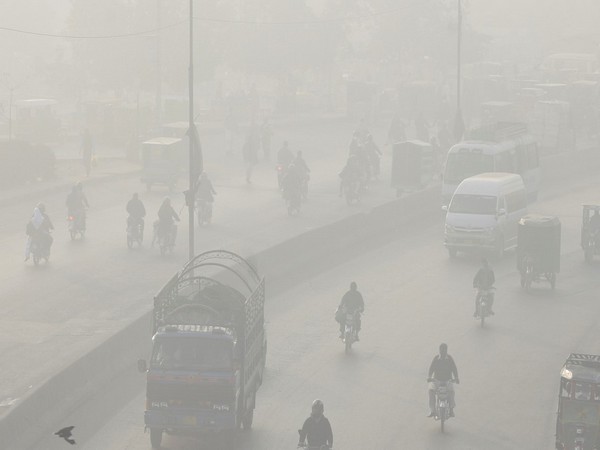Lahore's Toxic Air Crisis: Unprecedented Pollution Levels Spark Emergency Measures
Lahore's air pollution has reached critical levels, exceeding WHO standards by 40 times and sparking severe health warnings. The AQI spiked to unprecedented heights, prompting emergency measures including banning outdoor activities for children and implementing work-from-home policies. Residents express anxiety over prolonged exposure and health risks.

- Country:
- Pakistan
In recent days, Lahore's air pollution crisis has intensified, reaching levels 40 times higher than what the World Health Organization deems safe, prompting urgent health warnings and widespread public concern. On Saturday, the city's air quality index (AQI) soared to an unprecedented 1,067, far surpassing the 'dangerous' level of 300, with PM2.5 pollutant concentrations peaking at 610. According to WHO guidelines, any 24-hour PM2.5 reading above 15 poses significant health risks, the Express Tribune reported.
A persistent smog layer, formed by fog and pollutants including diesel fumes and agricultural emissions, now envelopes Lahore. This situation has worsened due to cross-border winds carrying additional pollutants, elevating Lahore to third place on the global air pollution index, only behind Delhi and Kinshasa. On Saturday morning, areas near the Indian border noted alarming AQI figures ranging between 1,500 to 1,800, although a temporary wind shift briefly reduced the AQI to 283.
Despite this momentary relief, meteorologists warn that the reprieve might be short-lived, with expected changes in wind patterns likely to renew pollution levels, the Express Tribune indicated. Local environmental officials, like Jahangir Anwar, highlighted unprecedented air quality readings and anticipate high levels for several days. In response, authorities have enacted emergency measures such as restricting schoolchildren's outdoor activities, altering school hours, and initiating work-from-home mandates for both government and private employees.
To further curb pollution, bans have been placed on two-stroke engine tuk-tuks, while construction work and open-flame cooking by street vendors face new constraints. Four identified pollution 'hot spots' in Lahore will undergo heightened scrutiny to control pollutant sources. WHO links prolonged PM2.5 exposure to serious health issues, including heart disease and lung cancer, with a University of Chicago study indicating that pollution reduces Lahore's average life expectancy by 7.5 years. UNICEF reports that nearly 600 million South Asian children face high pollution exposure, with significant links to childhood pneumonia deaths.
Despite these challenges, life goes on for many residents. Among them is Rehmat, a 40-year-old painter who continues to work under hazardous conditions. 'What can a poor painter like me do if the government can't fix this? I will keep the mask on and work,' he said, illustrating the difficulties faced by many citizens reliant on daily labor amidst the pollution crisis. (ANI)
(With inputs from agencies.)
- READ MORE ON:
- Lahore
- air pollution
- WHO
- PM2.5
- smog
- health
- environment
- emergency measures
- air quality index
- children
ALSO READ
Revamping the NHS: Britain's Bold Plan for Healthcare
Health Sector in Focus: Key Developments in Pharmaceuticals and Policy
Delhi Engulfed by Smog: A Call for Urgent Action
Previous govts in Bihar never bothered about health infrastructure: PM Modi after laying foundation stone for AIIMS Darbhanga.
AIIMS Darbhanga: A New Era in Healthcare for Bihar










